The Shadow Theory - Psychoanalysis
Throughout history, humanity faced many existential mysteries. One of the most shadowy enigmas of all times is that of the human psyche and spirituality. Numerous philosophical, sociological or religious currents tried to explain the core characteristics of the mind. We have so many theories out there that it’s literally impossible to tackle all of them in a single human lifetime. From Christianity to Buddhism to Platonic philosophy and Jungian psychoanalysis, humans constantly tried to explain their nature.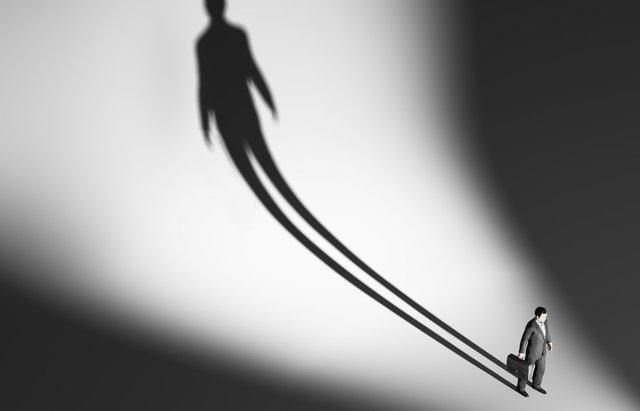
Source: voxukraine
Today, I’d like to talk about a theory developed by Carl Jung, entitled by him ‘The Shadow Theory’. Referring to it from a personal point of view, I had a time in my life when I simply wasn’t able to believe in anything. Everything was neither black, nor white, nor colored. I was living in an emotional wasteland of ‘Grey area’. At that time, I initiated a long search for spirituality, but nothing seemed valid or relatable. At that point, the sciences of the mind popped into my life, and after extensive reading, I managed to become a feeling human being again.
One of the main preoccupations of psychoanalysts was to define the self. What does ‘The Self’ mean? How can humans search within themselves in order to find answers to questions that might affect them on the long run? Can humans heal trauma through self-assessment and internal dialogue? These were only a few questions addressed by this field of study around the 19th century.
After studying this field under the tutelage of Sigmund Freud, the forefather of psychoanalysis, Jung adapted and expanded his teacher’s theory of ‘Self’ or psyche. The Freudian theory is constructed around three main idioms: The ID, the Ego, and the Super Ego. I will not detail this thoroughly as they are not the topic of this article, but I’ll present them in a few sentences.
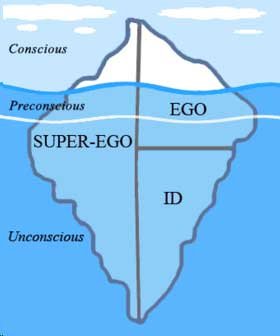
Source: www.simplypsychology.org
As Freud pictures it, The ID is that layer of the human psyche where our instincts can be found. It is the primitive and instinctive component of personality. It operates according to the pleasure principles, being that side of the human psyche where we can find the very famous and relevant to our today’s society, instant gratification.
The ego is a construct the develops as a necessity of mediation between the unrealistic ID and the real world. It’s the balance between our instinctual layer and social reality. It also follows pleasures but postpones satisfaction to avoid negative social consequences.
The super-ego is concerned by morals and it’s the incorporation of the values and morals that we learn from our parents. It has two separate layers: the conscience and the ideal self.
Basing on this theory, Jung made up his own theory of psyche which is known as the Shadow Theory. It’s a more complex theory, but not impossible to understand. The best way to imagine the ‘Self’ in Jung’s work is to imagine it as a diagram.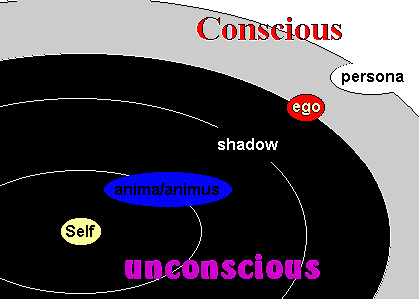
As you can see, there are more layers of conscious and unconscious mind, five of them, to be more specific. We will start the analysis of each layer from the outer to the inner world. The first layer of the psyche is called ‘The Persona’.
‘The Persona’ is a tool created by our psyche for social adaptation. In short, people have certain ‘masks’ that they put on depending on the social environment they are in. For instance, think about yourself and how you act when you’re at work versus how you behave when you are home with your closed ones or when you are out with friends, having a drink. As you may have noticed if you gave it a thought, these three instances force you to behave differently, in order to maintain a healthy social balance.
Regarding the use of Persona, people only alter their personality to an extent. It’s a natural psychological phenomenon, and you don’t have to worry about it or consider that you are either fake or a liar, because that is not correct. You can’t simply blurt out your ‘guilty pleasures’ or your darkest desires just like that and people have the necessity of hiding their personality if the social construct in which they are active conditions them so.
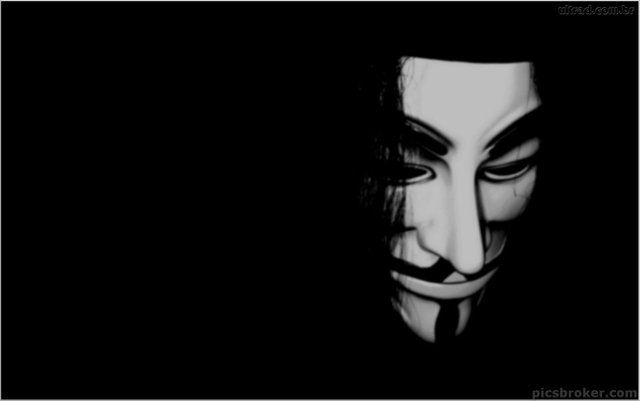
Source: www.PicsBroker.com
The second layer of the psyche is called ‘The Ego’. It is still located in the conscious mind, as Jung believes it. The Ego is the center field of consciousness. Think of it as the command HQ, as I’ve seen it explained in certain articles. This is the psyche section where relevant information from the outer world is filtered and decided upon. Simply put, the Ego is the decision making factor that balances the outer world with the unconscious mind.
The third one, and probably the most interesting archetype of self is ‘The Shadow’. All the repressed memories, fears, anxieties all the negative traits we would rather ignore about ourselves are amassed in the Shadow Zone. However, this doesn’t mean a person must ignore or avoid this construct, on the contrary, psychoanalysis claims that without a properly developed Shadow a person can easily become shallow and project these negative traits onto others, basically a living Persona.
We have all done this in the past. We saw a person’s way of behaving and we noticed some traits that we do not like and quickly jumped to conclusions. When this happens, there are two main possibilities: either that specific trait goes completely against our morals and values or we possess that negative trait, but would rather hide it from ourselves by projecting it through another person.
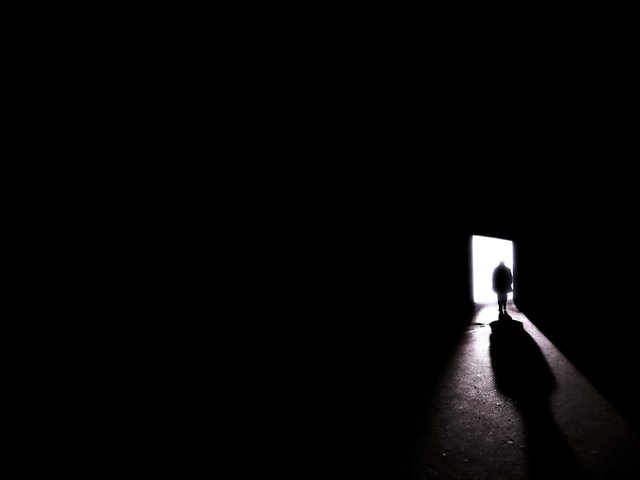
Source: www.wall.alphacoders.com
The Shadow Complex is not without its merits, Jung quotes. Wherever there is light, there must also be Shadow. Just as in a book, in order for the plot to develop properly, it needs both light and darkness. Once an individual manages to explore and balance Shadow and Persona he or she is one step closer towards balance. Also, the Shadow Zone is the main dictator of creativity and imagination. As dark and twisted as it is, it’s the source of one’s creativity and artistic predispositions. Once tapped, the Shadow is said to present limitless creative potential.
As we dig deeper into the unconscious mind we reach the Anima/Animus. This is a gender-based archetype and it’s explained like this: Men develop Anima, whereas women develop Animus. These are contra-sexual archetypes developed through interaction with the opposite sex, starting with a parent. Imagine this as a version of yourself, deeply hidden in the subconscious, that mirrors you as a member of the opposite gender.
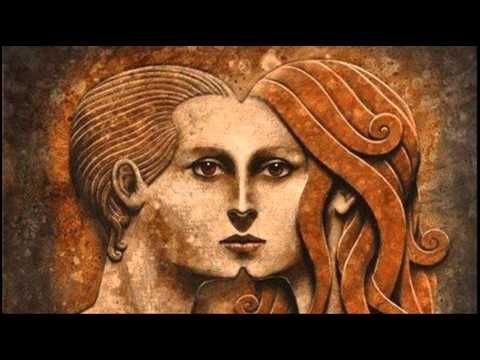
Source: Pinterest
Contrary to his contemporary peers, Jung argued the superiority of one side of the gender coin (as most psychoanalysts of the time considered masculinity to be superior), but rather envisioned them like two halves of a whole, halves which served to balance each other out.
In order to continue, I must also bring into the stage the process of ‘Individuation’ as defined in this field of human sciences. This process is the quest of searching for one’s individual wholeness and balance. Different therapies were developed by Jung and his followers in order to guide people on the road of ‘Individuation’. It’s quoted that in order to reach a certain individual completion, one must analyze the layers of self, starting from the outer edges of the psyche and digging deeper and deeper, one step at a time.
The central point of the psyche in Jungian psychoanalysis is generally referred to as ‘Self’. This is the sum of the total psyche with all its potential included. It’s that central system of the mind that is constantly driven towards fulfillment and wholeness. The ‘Self’ is considered as the main drive of the process of individuation, the journey towards self-development.

Source: farmingtonlibraries.com
As there are hundreds, perhaps thousands of theories regarding the human mind and its matrix, people are somewhat conditioned by their nature to seek out that certain ‘something’ that would help them develop. As this is one of the inherent goals that we all share I think that it’s safe to say that we cling to what we consider to be suitable for our psyche. Be it science, religion or art, we seek that one thing that would offer us a sense of accomplishment and achievement. I believe that all theories are correct, as long as they help individuals to overcome their condition and to find that inner peace and balance that we all seek.
Artists inspired by the Shadow Theory: There are a few musicians that quote some of Jung’s works, but by far, the most heavily Jungian oriented artists are the musicians composing the band Tool. Tool is an American progressive rock band, originating from LA, California. Their work was heavily influenced by the Shadow Complex and many of their album tracks have references to Jung’s psychoanalysis. The best example is the track ’46 and 2’ which directly points at the Shadow Zone:
“Join in… Join in, my child
And listen… digging through my old numb shadow.
My shadow’s shedding skin
I’ve been picking scabs again.
I’m down, digging through
My old muscles, looking for a clue.’
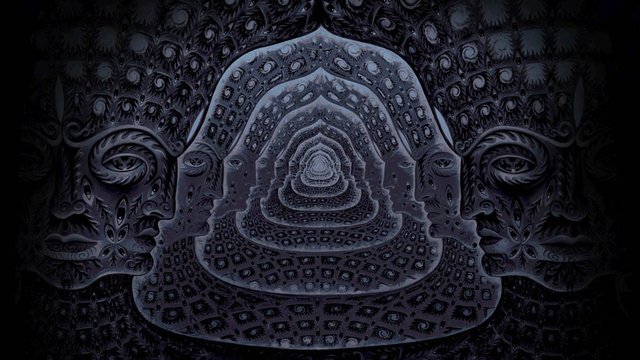
Tool - 10.000 Days album cover
Please leave in the comment section opinions, personal views on this topic and why not, critique (as constructive as possible). If you don’t like this article, tell me why, so I can get better.
Sources: Carl Jung – ‘Meeting the Shadow: The Hidden Power of the Dark Side of Human Nature’
Carl Jung – ‘Owning Your Own Shadow: Understanding the Dark Side of the Psyche’
Carl Jung – ‘The Undiscovered Self’
Carl Jung – ‘Symbols and the Interpretation of Dreams’
Update: there were a few grammar mistakes, due to Grammarly not working properly, but I've reviewed the article and corrected those mistakes.
This post was shared in the Curation Collective Discord community for curators, and upvoted and resteemed by the @c-squared community account after manual review.
Well that's awesome